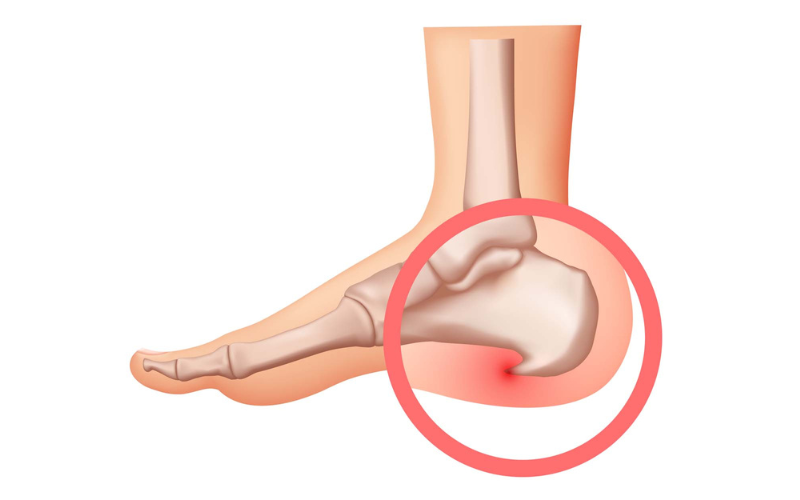 Heel spurs,
or calcaneal spurs, are bony growths that form on the underside of the heel
bone (calcaneus). Often linked to conditions like plantar fasciitis and Achilles
tendonitis, heel spurs themselves may not always cause pain but can lead to
discomfort and tenderness, particularly when they irritate surrounding soft
tissues.
Heel spurs,
or calcaneal spurs, are bony growths that form on the underside of the heel
bone (calcaneus). Often linked to conditions like plantar fasciitis and Achilles
tendonitis, heel spurs themselves may not always cause pain but can lead to
discomfort and tenderness, particularly when they irritate surrounding soft
tissues.
Causes of
Heel Spurs:
Heel spurs
develop gradually due to repetitive stress or strain on the foot. Key
contributing factors include:
- Plantar Fasciitis:
Inflammation of the plantar fascia, a ligament connecting the heel bone to
the toes.
- Excessive Pronation: Flat
feet or an abnormal gait can put extra strain on the heel.
- Poorly Fitting Shoes: Lack of
proper support can lead to heel spurs.
- Excessive Weight or Obesity:
Added body weight puts more pressure on the feet, increasing the
likelihood of heel spurs.
- Prolonged Standing or Walking on
Hard Surfaces: Extended periods of standing or walking on hard
surfaces can contribute to heel stress.
-
Symptoms
of Heel Spurs:
Heel spurs
themselves are often painless, but they can cause discomfort when they press
against soft tissues, like the plantar fascia. Common symptoms include:
- Sharp, Stabbing Pain in the Heel:
Especially noticeable during the first steps in the morning or after
extended rest.
- Pain Worsening with Activity:
Activities that impact the heel, such as running or jumping, can increase
pain.
- Tenderness and Inflammation:
The heel area may feel tender and inflamed.
- Redness and Swelling: Some
people experience visible swelling and redness in the heel region.
Treatment
for Heel Spurs:
Treatment
focuses on relieving pain and reducing inflammation, with common approaches
including:
- Rest: Minimize activities
that aggravate the pain, allowing the heel to heal.
- Orthotics: Custom or
over-the-counter shoe inserts offer support and cushioning to reduce
pressure on the heel.
- Supportive Footwear: Properly
fitted shoes with good arch support and cushioning can alleviate
discomfort.
- Stretching Exercises:
Stretching the calf muscles and plantar fascia helps relieve tension and
reduces stress on the heel.
Heel spurs
can be effectively managed with a combination of supportive footwear,
orthotics, and stretching routines to reduce pain and prevent further
irritation.
 Heel spurs,
or calcaneal spurs, are bony growths that form on the underside of the heel
bone (calcaneus). Often linked to conditions like plantar fasciitis and Achilles
tendonitis, heel spurs themselves may not always cause pain but can lead to
discomfort and tenderness, particularly when they irritate surrounding soft
tissues.
Heel spurs,
or calcaneal spurs, are bony growths that form on the underside of the heel
bone (calcaneus). Often linked to conditions like plantar fasciitis and Achilles
tendonitis, heel spurs themselves may not always cause pain but can lead to
discomfort and tenderness, particularly when they irritate surrounding soft
tissues.